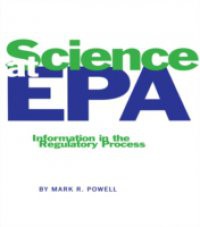The U.S. Environmental Protection Agency was created to protect public health and the environment, and it has traditionally emphasized its regulatory mission over its scientific mission. Yet for environmental policy to be credible with the public and policymakers, EPA's actions must have a sound basis in science. In Science at EPA, Mark Powell offers detailed case studies that map the origins, flow, and impact of scientific information in eight EPA decisions involving the agency's major statutory programs. Drawing on extensive research and interviews, he provides the most comprehensive examination available on the acquisition and use of science in environmental regulation. Powell describes the key obstacles to the practical, efficient, and effective acquisition and use of knowledge in what is a crucial, but complex endeavor. His book is an essential contribution for practitioners, scholars and students, and citizens who are determined to protect our environment rationally and effectively.

